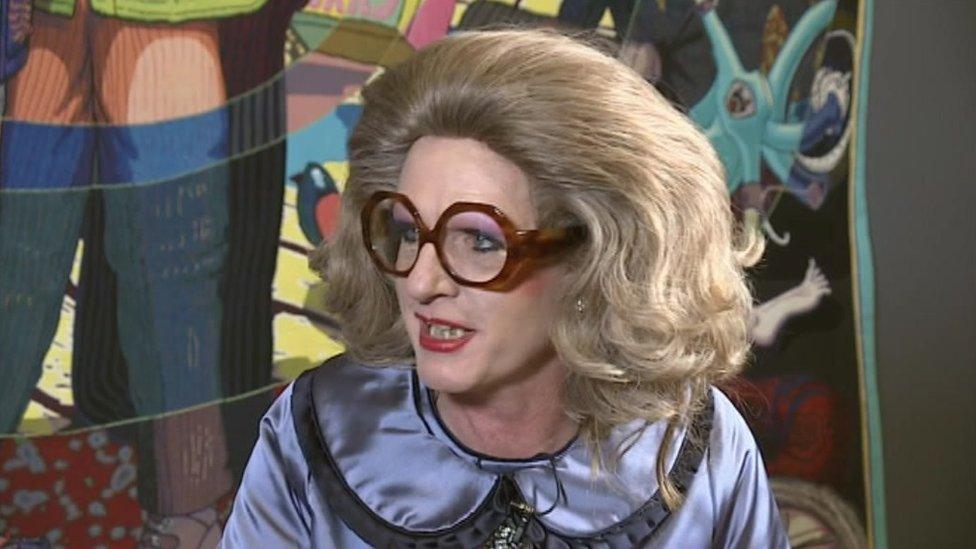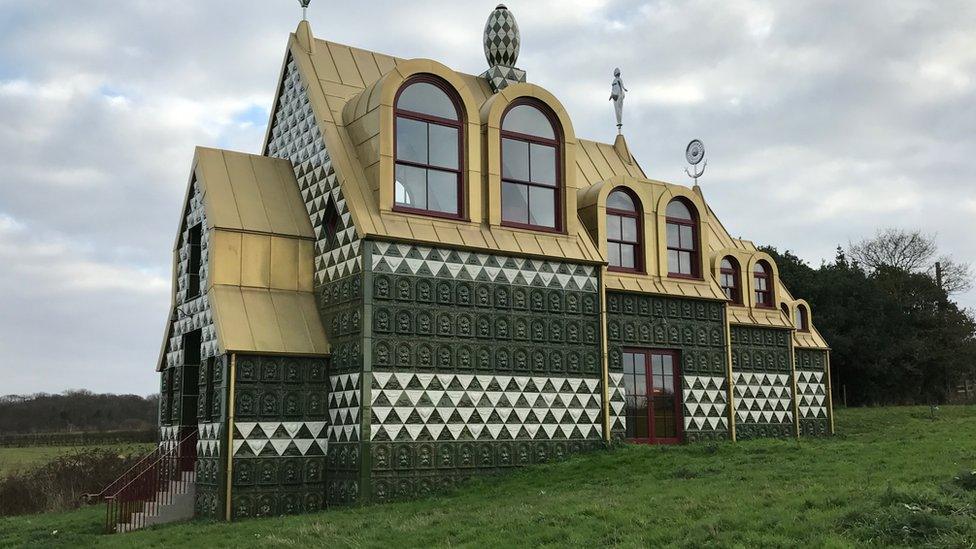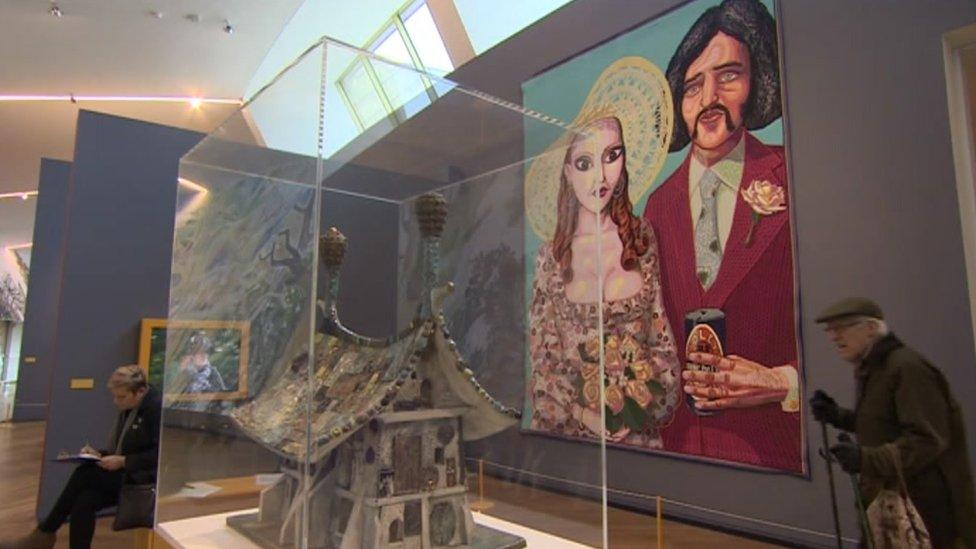Grayson Perry's House for Essex: Artist's 'deep research' for 1970s look
- Published

Artist Grayson Perry was born and raised in Essex, and took inspiration from the county for his work The Life of Julie Cope
Grayson Perry has told the BBC how he spent hours searching the internet for the perfect 1970s look for his Essex-themed creations.
A collection of his work, The Life of Julie Cope, is being exhibited at Firstsite gallery in Colchester.
It tells the story of a fictional Essex woman's life, with tapestries depicting key moments like her wedding.
"I researched the images very deeply," said Perry of his work. "I wanted her to be a very ordinary sort of person."
The Turner Prize-winning artist added: "In the end I searched for 'our wedding 1974' and that's the one that really hit. There are all the people with taches and bad jackets and flouncy hair."

Perry's 'A House for Essex' is located in Wrabness, on the banks of the River Stour
The four tapestries on display at Firstsite are usually found inside 'A House for Essex', a building in Wrabness designed by Perry as a shrine to Julie.
Through his creations, Perry tells the story of Julie's life; her birth during the 1953 flood on Canvey Island, her unsuccessful first marriage and life in Basildon, before ultimately finding happiness in Colchester with a second marriage and returning to education.
Julie's death - she was killed in an accident with a curry delivery moped - also forms part of the work.
"Because we conceived of the house as a kind of religious building, like a shrine or a chapel, it is a shrine to a certain sort of identity," he said.
"I wanted it to be like the Taj Mahal, a memorial."

Four of the artist's tapestries are on display at Firstsite, including one which portrays Julie's 1970s wedding to her first husband
Perry, who was born and raised in the county, has his own theories about social mobility and how it is reflected in Julie's life.
"If you look at this map of Julie's life, and this is one of the distinct things about Essex, as you go up the county, it becomes posher.
"Julie's life - she was born a baby boomer, so social mobility was a distinct possibility, unlike nowadays where it's stalled."